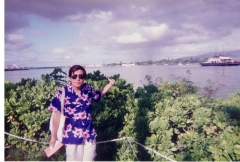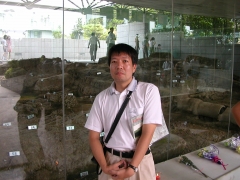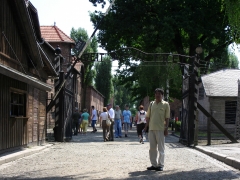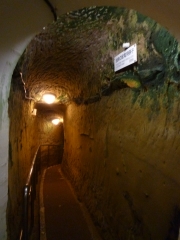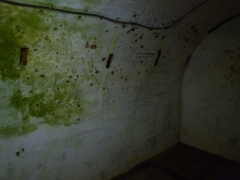29 July 2021
Small is beautiful!
I recently come to think "Small is beautiful" meaning you do not have to seek bigger size. Why not just stay in a small scale, which may be more comfortable?
I live in Tokyo, where so many tall modern buildings stand. But I am not attracted to such scenery any more.
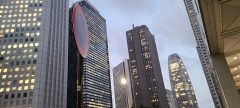
Now I am attracted to traditional district of Kyoto, where wooden low height houses line up.
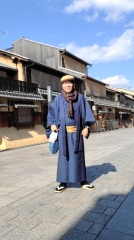
Tall modern buildings consume so much electricity that requires mega power plants causing mass emission of carbon dioxide or radioactives.
Since so many people gather in small areas, people become more susceptible to infectious disease like the current pandemic.
Why do we seek higher, bigger, and more gorgeous things? I am fed up with these things.
Not only the tall modern buildings but ongoing Tokyo Olympics are good example. Why do athletes want to compete with others for the gold medals? To become a hero, or get a prestigious status?

What is the significance of competing in Olympics? Is it worth risking their bodies? No way. Just a sport.
Major corporations utilize them as tools to boost their sales. Olympics are commercial shows.
This time due to the pandemic, no spectators are at the competition, meaning mass-gathering is a bad way for public health. Instead TV broadcasting worked.
Why do we need to watch such big events?
I would rather like to join a small banquet with ten or less people to be entertained by Geishas. So I can get much more closer to real entertainers than televised figures.
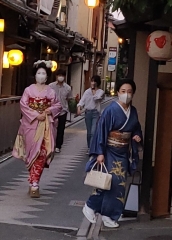
What should be the goal for humanity? I do not think tall modern buildings and Olympic athletes represents the answer.
31 December 2020
First Episode of "Little house on the Prairie" Model life in Post-COVID-19 era?
I just happened to watch the old time TV show on internet. The TV drama-series "Little House on the Prairie" was first aired in 1970's US and later dubbed version of it was aired in Japan as well.
I liked the show but it seemed the stories in the show were mostly fiction or modified for the dramatic effect.
But the very first episode seems not since I read the original novel written by Laura Ingalls Wilder and compared to the episode.
It started with Ingalls family departing from the woods and found the place to settle down. They could have owned the land by cultivating the fields in accordance with Homestead Act of late 19th century, a pioneer period.
But they had to live in a very wild environment and had to deal with native people and wild animals. They had to dig the ground to make a well for water. They had to cut trees to make logs to build the house.
In a very small house, at first there was no floor boards and the roof was hood taken out from the horse carriage. What they had was only basic needs.
Our civilization is now on the edge due to the deadly flu and global climate change. It was because we try to have too much destroying the natural ecosystem. The modern system we rely on too much was found to be very vulnerable to such crisis.
It is time to rethink our way of life. "Little House on the Prairie" may be a good model of how one lives one's life without luxuries modern people have gotten used to.
The answer may be somewhat of that little wooden house or Native People, whom the family called "Indians" in the show.
15 September 2019
Film “East Side Sushi” Can Japanese accept the change?
A story of a Mexican American woman who worked in Japanese cuisine restaurant for the purpose of getting a stable job and later came to want to be a sushi chef. The story took place in California.
In Japan you can rarely meet a female sushi chef. It is said that women are unfit for the job because their body temperature is normally higher than men so they cannot grip rice and raw fish properly.
But such things are nonsense. The bottom line is it is just male chauvinism that prevented women from entering that industry.
In the film the owner of restaurant preferred Asian men standing and making sushi inside counter facing directly to customers. It was his intent to keep the image as a Japanese restaurant. She cooked in the inner kitchen. She could make better sushi and never smoke but Asian men who smoked were allowed to face customers.
Why are we so stubborn?
The film seemed to question how Japanese should deal with new ideas and educates us how to live with diverse population. Meaning we have to give up conventional stereotypes of our own.
There are many foreigners who do Japanese things lately. There are many foreign sumo wrestlers. There are many women who do what traditionally men do.
A dark skin Mexican female sushi chef indeed looks odd to us but that doesn’t mean it is wrong. As long as they can make delicious ones, it is desirable.
In the film protagonist knew importance of freshness even before she became a chef. That is very much related to sushi making.
Japanese cultures are not just for Japanese to enjoy and preserve but all of the people in the world.
Besides above, what you can learn from the film is sushi rice is made with vinegar, sugar, and salt. Japanese chef use carbon steel knives, sticking chopsticks on rice is very inappropriate act which resembles funerals.
Great lessons for Japanese viewers. Most Japanese never knew.
16 May 2018
My Dark Tourism
Have you heard of the term "Dark Tourism"?
This is the tour to spots in which historically or even recently terrible incidents happened. It is not a travel to have fun. Rather it is for travelers to study the past and present for the better future.
I recently found I have done that many times for many years. Actually I've written about some of such trips on this blog.
But here I present photos and name of sites, year I visited.
Pearl Harbour, Hawaii, the site the Japanese military attacked on US Naval Force on 7 of December 1941
Nanjing China September 2004, the site of Rape of Nanjing in 1937, where the Japanese Imperial Army mass-murdered hundreds of thousands of Chinese including civilians.
Auschwitz, Poland 2008, Holocaust Death Camp established by Nazi-Germany during the second world war
Hacksaw Ridge, in Okinawa, July 2017, A steep cliff, a big battle site between Japan and US during the second world war, where US forces climbed up to the Japanese Imperial Army Base
This incident was adapted to the 2016 film "Hacksaw Ridge." I joined a guide tour of viewing the site where the battle took place.
The below photos are taken at The Former Navy Underground Headquarters, which I took in September 2013.
Trace of suicidal bombing by a cheif commander inside the headquarter in the end of the battle.
This year's March,
Execution site of 26 Christians in Nagasaki, late 16th century,
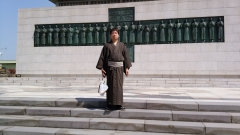
Half blown Torii Gate by the Atomic Bomb dropped on 9 of August 1945
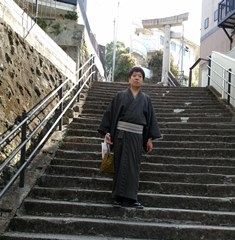
A-Bombing dome in Hiroshima, near Ground Zero of the atomic bomb dropped on 6 of August, 1945
There I met a survivor of the bomb and a German tourist and had local specialty food Okonomiyaki together at a restaurant nearby. I would like to write a mock-documentary script based on that experience.

As for the recent matter, gate of Evacuation zone of Crippled Fukushima Nuclear Power Plants that was destroyed by the earthquake and Tsunami in March 2011. I visited there last year's March. Radiation Measure indicated twice higher level than normal. It is like another tour to Chernobyl.
Some claim, visiting those places should not be regarded as Tourism. But I believe this is something we all have to do. Because we are living in a world such things can happen again anytime.
Later I want to show another type of Tourism, which I call "Hot Tourism." Another Study Tour but what you see is currently happening and can join the incidents if you like.
14:16 Posted in China, Culture, Deutschland, Politics, Society, Travel, US-Japan relationship | Permalink | Comments (0) | Tags: history, nuclear power, nuclear weapon






